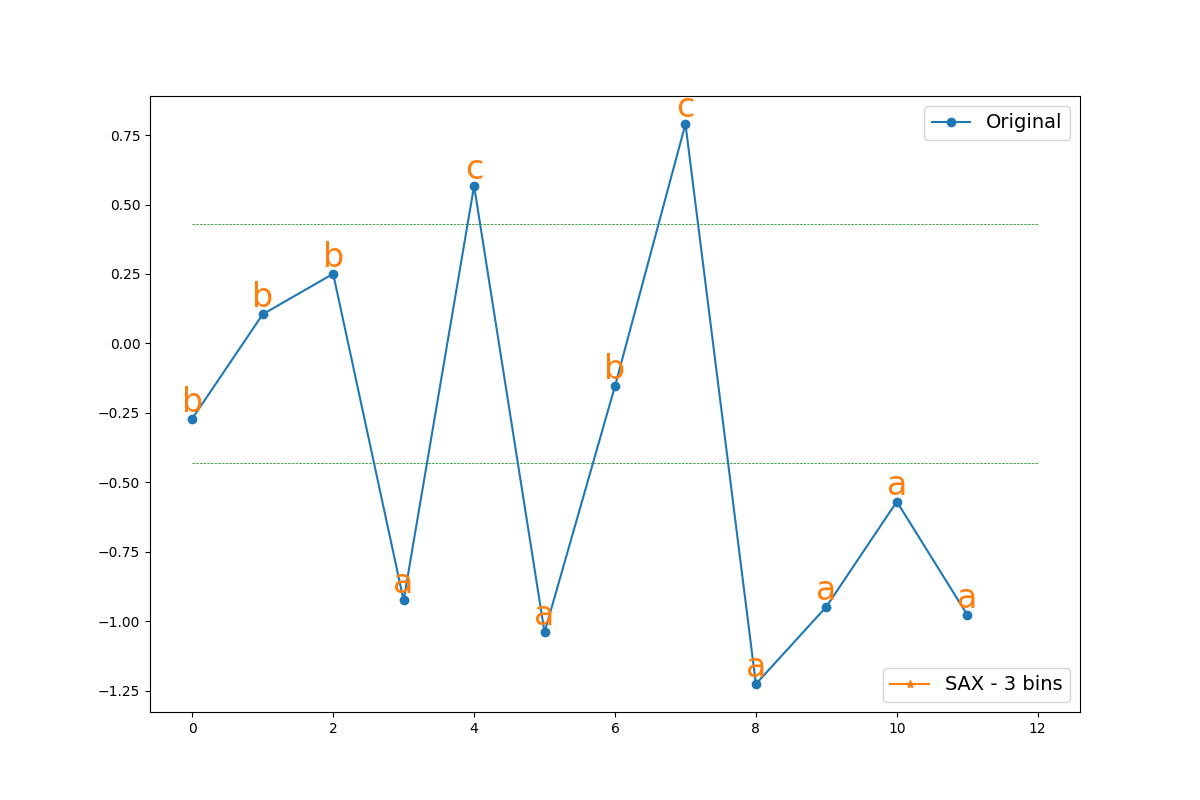Symbolic Aggregate approXimation¶
This example shows how you can quantize a time series (i.e. transform a
sequence of real numbers into a sequence of letters) using
pyts.quantization.SAX.

import numpy as np
import matplotlib.lines as mlines
import matplotlib.pyplot as plt
from scipy.stats import norm
from pyts.quantization import SAX
# Parameters
n_samples, n_features = 100, 12
# Toy dataset
rng = np.random.RandomState(41)
X = rng.randn(n_samples, n_features)
# SAX transformation
n_bins = 3
quantiles = 'gaussian'
sax = SAX(n_bins=n_bins, quantiles=quantiles)
X_sax = sax.fit_transform(X)
# Compute gaussian bins
bins = norm.ppf(np.linspace(0, 1, n_bins + 1)[1:-1])
# Show the results for the first time series
plt.figure(figsize=(12, 8))
plt.plot(X[0], 'o-', label='Original')
for x, y, s in zip(range(n_features), X[0], X_sax[0]):
plt.text(x, y, s, ha='center', va='bottom', fontsize=24, color='#ff7f0e')
plt.hlines(bins, 0, n_features, color='g', linestyles='--', linewidth=0.5)
sax_legend = mlines.Line2D([], [], color='#ff7f0e', marker='*',
label='SAX - {0} bins'.format(n_bins))
first_legend = plt.legend(handles=[sax_legend], fontsize=14, loc=4)
ax = plt.gca().add_artist(first_legend)
plt.legend(loc='best', fontsize=14)
plt.show()
Total running time of the script: ( 0 minutes 0.028 seconds)